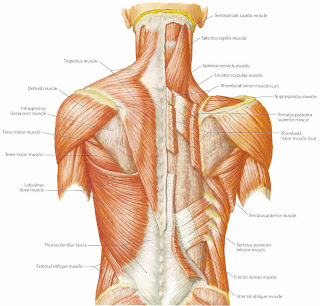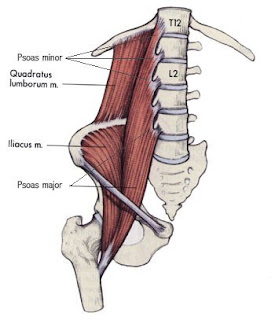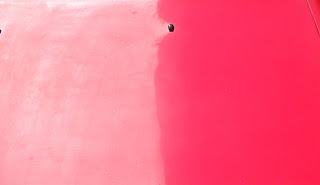Allergen and germ removal systems
Allergen [: any substance that can cause an allergy or that is capable of stimulating hypersensitivity] i.e. smoke, volatile organic compounds (VOC) from vehicles interior materials and organic odours
Germs [: a micro-organism (infectious agent) especially a pathogen] i.e. bacteria and other bio-pollutants.
Ultraviolet germicidal irradiation (UVGI) is a sterilization method that uses short wavelength ultraviolet (UV) light at to break down microorganisms. The application of UVGI to sterilization has been an accepted practice since the mid-20th century. It has been used primarily in medical sanitation and sterile work facilities. [1]
New Car Smell
Is the common term for the odour that comes from the combination of materials used and out gassing of vinyl plasticisers, and various adhesives (including those used on finished leather) that are found in new automobiles Many health care professionals regard the volatile chemical compounds pose a health risk in such a confined area.
The new-car smell emanates largely from chemicals known as volatile organic compounds, or VOCs, that leach from glues, paints, vinyls and plastics in the passenger compartment. The fumes can trigger headaches, sore throats, nausea and drowsiness. Prolonged exposure to some of the chemicals can lead to cancer, though there's no evidence linking that to concentrations in cars.
Critics liken the problem to so-called sick-building syndrome, which traces some illnesses to similar agents seeping from the walls, carpets and fixtures of new buildings.
The presence of bacteria and mould in vehicle interiors
Dr. Charles P. Gerba and Sheri L. Maxwell set out to test the presence of bacteria and mould in vehicle interiors. There were 100 vehicles involved in the test in the states of Illinois, Arizona, Florida, California and Washington, D.C., to provide a good cross-section of climatic conditions across the country. The following lists some of the results of their testing’s.
Most germs present:
1. Radio knob
2. Seat belt
3. Window opener
4. Steering wheel
5. Car seat
Places with most Staphylococcus. aureus (most common form of Staph infections):
1. Steering wheel
2. Seat belt
3. Cup holder
4. Dash board
5. Window opener
Most mould spores:
1. Cup holder
2. Food spills
3. Change holder
4. Dash board
5. Steering wheel
Cities with the most bacteria in vehicles (from a select sample):
1. Tucson, AZ
2. Oakland/Pleasanton, CA
3. Chicago
4. Washington, D.C.
5. Tampa, FL
Odour Neutralizer / Deodorizing
Many odours are caused by micro-organisms such as bacteria, mould, and mildew. First start by cleaning all the interior surfaces; but remember shampooing alone will not eradicate these odours. You eliminate dour-causing organisms with very specialized chemicals.
Look for stains, if there are no stains, use the process of elimination; it is very effective when searching for the source of an odour; floor or seats, mats or carpet? If the vehicle has velour upholstery, a spill can penetrate on contact. If it is vinyl or leather, it will run to the deepest seam. Pay special attention to the headliner and all glass surfaces
Counteractants
Most of these products (i.e. Fabreeze) do not eliminate germs or allergens they merely provide a cover-up scent to mask odours
Cabin Air Filter
We all know the problem. The fans blow in everything that belongs outside; gaseous pollutants like ozone, nitrogen oxides, sulphur dioxide, hydrocarbons, as well as dust, soot and pollen all have free access to the vehicle. Cabin filters, on the other hand, clean the incoming airflow before they reach the vehicle's interior, thus guaranteeing healthy fresh air
Cabin air filters first appeared back in the mid-1980s on Audi and other European makes. Today, about 80 percent of all new import and domestic vehicles have a cabin air filter. They absorb up to 100% of all pollen, dust particles and harmful substances. This results in a noticeable improvement in the air quality inside the vehicle. Cabin filters are generally found in one of three locations: under the hood, inside the glove box or under the dashboard.
The filter can trap pollen, dust, smoke and other pollutants that would otherwise enter the vehicle through the outside vents causing allergy and discomfort due to undesirable smells.
The recommended replacement interval for a cabin air filter depends on the type of filter being replaced. (Carbon or paper) and the cabins filter exposure to the environment and mileage driven.
Most vehicle manufacturers do recommend replacing a paper or carbon activated filter once a year or every 10,000 to 12,000 miles to keep the cabin filter working at its highest efficiency. Check vehicle owner’s manual for location
Activated charcoal cabin filters. These filters have an extra layer of activated carbon that reacts with odours and other airborne pollutants to neutralize them before they enter the vehicle. The charcoal activated filters will also reduce the levels of CO2 (carbon monoxide) and NO2 (oxides of nitrogen) from the emissions of other vehicles on the road.
Bosch Cabin Filters - and charcoal activated filters absorb up to 100% of all pollen, dust particles and harmful substances. Cabin Filter recommended replacement is every 12,000 to 15,000 miles, or once a year will keep the cabin filter working at its highest efficiency
A little ‘light’ Cleaning
A new technology developed by University of Tokyo professor Fujishima Akira is attracting a lot of attention. Fujishima uses photo catalysts and irradiation to break down chemicals. In addition to helping make anti-bacterial tile and air-purification devices, other promising applications of this photo catalyst technology continue to come to light.
The Nano Titanium dioxide (Tio2) photo catalytic decomposition process requires ultra violet (UV-A) radiation exposure to create hydroxyl radicals, which will oxidize oxygen or organic materials directly, thereby sterilizing and deodorizing germs and allergens for long-lasting effects and anti-soiling purposes. Generally speaking, disinfections by titanium oxides are three times stronger than chlorination, and 1.5 times stronger than ozone treatment.
This type of coating transforms any surface into anti-bacterial; anti-fungal; mold free surface, purifying the surrounding air and provides protection from environmental contamination.
The film will decompose all kinds or micro-organic matters, like bacteria, viruses, mold, formaldehyde, benzene, xylene, ammonia, volatile organic compound (VOC) tough odors etc and have been proven to combat Bird Flu and SARS infections in high risk areas like Hospitals and Medical treatment facilities.
DrivePur
Using the latest in photo catalytic technology DrivePur can quickly and effectively remove pet odors, smoke odors, food odors, germs, bacteria, mold, mildew, stains and other contaminants from the interior. Symptom that occurs from prolonged exposure to microbes that grow in automobile interiors, the presence of the microbes causes similar reactions as sick building syndrome. Some of the examples of odour molecules are: tobacco odor, formaldehyde, nitrogen dioxide, urine odor, gasoline, and many other hydrocarbon molecules in the atmosphere.
DrivePur is a three step process:
· Changes the chemistry of tar and nicotine as well as working on high pH odours
· Antibacterial odour neutralizers for low pH odours
· Tio2 - "The insurance policy the odour will not comeback.
Using specialized spray-coating equipments (Tornador) a fine mist <5 µ of a water-based Ti02 photo catalyst that can be applied on different types of surface material that forms a nano structure of protection and guarantees the maximum result.
DrivePur Protection Systems
1. Smoke is very effective at eliminating cigarette and all other tobacco odors. It has the ability to penetrate, seek out, and react with the components of tobacco smoke. It dissolves and converts most into water-soluble molecules without causing damage to fabrics, materials, or hard-surfaces.
2. Shock is designed to provide thorough cleaning and elimination of Bio-Pollution in vehicle interiors. It is very effective on vehicle AC systems and will assist other DrivePur products in preventing contamination of treated vehicle surfaces
3. Prevent is a nano formulated photo catalytic surface treatment that turns vehicle interiors into light activated air and surfaces scrubbers. It helps vehicles eliminate most objectionable organic odors, germs, bacteria and other Bio-Pollutants.
a) PŪRWorld is a spray application deodorizing product (not a cover-up sent); hydroxyl radicals are among the strongest oxidizing species, even much stronger than chlorine, ozone, and peroxide. They act as very powerful disinfecting agents by oxidizing the cells of microorganisms, causing rupture and leakage of vital composition.
They accelerate the breakdown by destroying the molecular bonds. This will help combine the organic gases to form a single molecule that is not harmful to humans thus enhance the air cleaning efficiency.
b) Aquartz - So2Pure (Clean Air), this is not a perfume cover-up type product but an advanced high grade air purification coating based on the latest nano-science technology photo catalyst. In the presence of light, active oxygen is formed and excited on the treated surfaces to destroy all micro-sized air pollutants, including petro fumes, smog, diesel smoke, exhaust gases, industrial smoke, chemical off-gassing or VOCs from car fabric, leather and plastic materials, air toxins, cigarette odours, etc.
c) Biocide Systems - Chlorine Dioxide (ClO2) is a potent oxidizer that literally uses oxygen to break up odour molecules. This sort of oxidizing action is found in many chemicals, but ClO2 is one of the most effective. ClO2 gas is especially good at oxidizing organic odour-causing substances, including Volatile Organic Compounds (VOC). It does not mask them like perfumes do, it neutralizes them through oxidation and is very effective
d) Ozium® air sanitizer - does not cover up the odours associated with pets, cooking and smoking. The original air purifier is a chemical agent that actually eliminates smoke and unpleasant odours and reduces airborne bacteria. It actually cleanses the air through glycolized action. The glycolized formula acts directly on odour causing particles in the air. Ozium is an EPA registered air sanitizer and is safe to use residentially or commercially in homes, rental property, hospitals, nursing homes, hotels, veterinary clinics, restaurants, bars, laundry rooms, cars, mobile homes, offices, and just about anywhere there might be an odour problem.
Application method- spray product onto cleaned surfaces, turn the AC to recirculation mode, spray return air ducts (clean or change cabin air filter) allow to run for approx 5 minutes, allow the deodorizer to permeate the various surfaces for about an hour before using the vehicle.
1. Natural environmentally safe products - http://www.glisteningperfectionstore.com/servlet/the-Shop-By-Manufacturer-cln-Lumiere/Categories
Bibliography
1. Allergic Disease, Allergic Disorders, Allergic Illness – HON Allergy Glossary
2. Killing Germs and Allergens with Ultraviolet Light
Copyright © 2002-2011, TOGWT® (Established 1980) all rights reserved





